Social Comparison Theory
Discover social comparison theory techniques. Evidence-based approaches for effective education.


Discover social comparison theory techniques. Evidence-based approaches for effective education.
Social comparison theory, a concept rooted in social psychology, is an integral framework for understanding how individuals determine their own social and personal worth based on how they stack up against others. In its essence, the theory posits that people make comparisons to people in their environment, to a "comparison standard," which is often a peer or societal norm.
These comparisons influence not just self-esteem and motivation but also affect mental health and social cognition, as they are part of our social comparison processes, which are pervasive in daily life.
Educators are keenly aware that the classroom is a microcosm of broader social dynamics, and understanding the nuances of these comparison principles can be crucial for fostering a healthy learning environment. For instance, the Self-Evaluation Maintenance Model provides insight into how proximity to successful peers can impact a student's self-evaluation, either through inspiration or discouragement, depending on various factors like relevance and personal relationships.
Key points to understand about this theory include:
As articulated in Current Psychology, "Comparisons are not merely about the better or worse but are a sophisticated dance of context, relevance, and personal significance that intricately shapes our self-perception and development". These principles are not just academic; they have tangible implications for the classroom, where future studies may continue to unveil nuanced understandings of the social comparison process.
Leon Festinger was a pioneering social psychologist known for his groundbreaking contributions to the field. Here's a brief biography and summary of his achievements:
Leon Festinger, a prominent figure in social psychology, is best recognized for his development of Social Comparison Theory and Cognitive Dissonance Theory. His work has profoundly influenced our understanding of human behavior, especially in the context of small group dynamics and individual cognition.
Key Achievements and Contributions
Festinger's theories continue to be pivotal in understanding various aspects of human psychology, from social behavior and group dynamics to cognitive processes and health behavior. His contributions have laid the groundwork for numerous developments in social psychology.
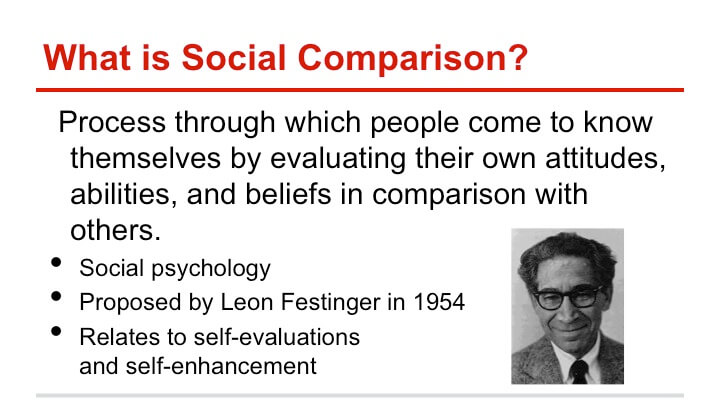
Social comparison is a natural human tendency to assess one's own abilities, opinions, and accomplishments in relation to others. In today's increasingly interconnected society, social comparison has been amplified through platforms such as social media, leading to significant impacts on individuals' self-evaluations.
The constant exposure to carefully curated highlight reels of others' lives and achievements can often create feelings of inadequacy, self-doubt, and low self-esteem. However, social comparison can also serve as a source of motivation and inspiration, fostering self-improvement and personal growth.
Understanding the impact of social comparison on self-evaluation is crucial in navigating these complex effects and developing strategies to maintain a healthy sense of self-worth and positive self-perception.
Downward comparisons refer to the act of comparing oneself to others who are worse off in some way. This can be a strategy used to protect or boost one's self-esteem. When individuals engage in downward comparisons, they evaluate themselves in relation to others who are less successful, less accomplished, or facing more difficulties.
By comparing themselves to those who are worse off, individuals can feel better about themselves and their situation.
Engaging in downward social comparisons allows individuals to focus on their strengths and achievements, as they compare themselves to others who are not as fortunate or successful. For example, a person who is feeling insecure about their appearance may compare themselves to someone who they perceive as less attractive, which helps them feel more attractive by comparison.
Similarly, individuals may compare their own financial struggles to those who are facing greater financial difficulties to feel a sense of stability and resourcefulness.

Several factors contribute to the effectiveness of downward comparisons in boosting self-esteem. Firstly, the perceived similarity is important as comparisons are more effective when individuals perceive themselves as similar to the target of comparison.
Secondly, the relevance of the domain being compared matters; the comparison needs to be relevant to the individual's self-concept and the areas in which they are seeking validation. Finally, the extent to which individuals can distance themselves from the negative aspects of the target of comparison can also impact the effectiveness of downward comparisons.
Downward comparisons can have a positive impact on self-esteem by allowing individuals to focus on their strengths and accomplishments. Through comparing themselves to others who are worse off, individuals can enhance their self-perception and feel better about themselves and their situation.
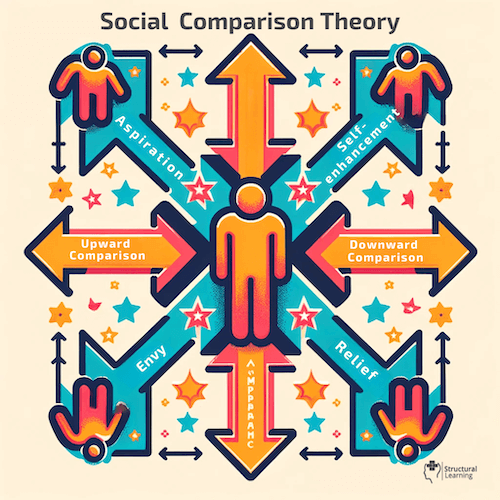
Upward comparisons refer to the act of individuals comparing themselves to those they perceive as being "better" in certain aspects. Through these comparisons, individuals evaluate themselves based on the success, abilities, or attributes of others. This process can significantly impact an individual's self-esteem and motivation.
When people compare themselves to those they consider as more accomplished or superior, it often leads to negative effects on their self-esteem. They may feel inadequate, flawed, or inferior in comparison. This negative self-evaluation can lower their overall self-worth and confidence, causing feelings of dissatisfaction and unhappiness.
Moreover, upward comparisons can also have a profound impact on an individual's motivation. When individuals consistently compare themselves to those they perceive as superior, it can create a sense of unattainable goals or unrealistic standards. This comparison can reduce their motivation levels as they feel discouraged or overwhelmed by the perceived gap between themselves and the ideal.
However, it is important to note that not all upward comparisons are detrimental. Under certain circumstances, upward comparisons can serve as sources of inspiration and motivation. By observing the achievements and qualities of others, individuals can set higher aspirations for themselves and strive for self-improvement.
In conclusion, upward comparisons can have both positive and negative impacts on an individual's self-esteem and motivation. While they can potentially lower self-esteem and demotivate individuals, they can also serve as inspiration for personal growth and achievement. It is essential for individuals to maintain a healthy balance in their comparisons and focus on their own progress rather than solely on others' accomplishments.
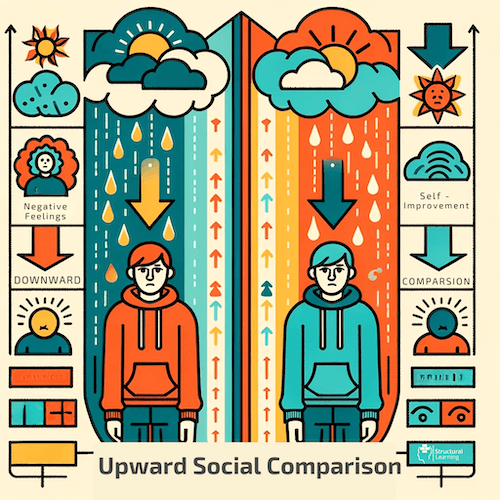
In adolescence, a pivotal developmental stage, social comparison theory takes on a profound significance, particularly due to the emerging individual differences in social comparison orientation. Adolescents, in their quest for identity formation and self-understanding, often engage in various types of comparisons, seeking benchmarks against which to measure their own abilities and achievements. This period is marked by heightened sensitivity to peer perceptions and a strong inclination towards assessing oneself in relation to others.
One critical aspect of these developmental comparisons is their impact on subjective well-being. Adolescents who frequently compare themselves to others might experience fluctuations in life satisfaction, contingent on the nature of these comparisons. For instance, upward comparisons, or comparing oneself to someone perceived as better off, can lead to feelings of inferiority and decreased self-esteem.
Conversely, downward comparisons, while potentially boosting short-term self-esteem, may not contribute positively to long-term self-concept and life satisfaction. This dynamic is crucial in the context of comparison in adjustment, where adolescents navigate the complex social hierarchies of their environments.
Moreover, the Dunning-Kruger Effect can play a role in adolescent social comparison, where individuals with lower ability at a task overestimate their ability, and those with higher ability underestimate it. This cognitive bias can lead to skewed self-assessments among adolescents, further complicating their social comparison processes.
Gender differences also emerge in how adolescents engage in social comparisons, with varying implications for their mental health. Research indicates that girls might be more prone to social comparisons related to physical appearance and academic achievement, potentially impacting their self-esteem and body image. Boys, on the other hand, may engage more in comparisons related to athletic abilities or social dominance.
In summary, the developmental aspects of social comparison theory in adolescence are complex and multifaceted, deeply intertwined with individual differences and the social comparison orientation. These comparisons, while a natural part of adolescent development, can significantly influence an individual's subjective well-being, life satisfaction, and overall mental health, necessitating a nuanced understanding of their implications.
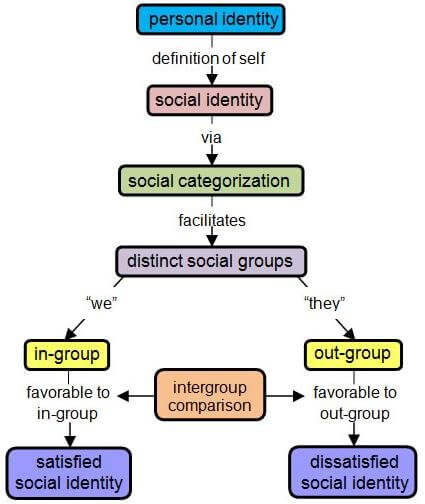
It's crucial to recognize that while comparing ourselves to others is a natural human tendency, it can sometimes lead to negative emotions and affect our mental well-being. To mitigate these adverse effects, both adolescents and adults can benefit from specific coping strategies.
These strategies are designed to help individuals navigate the complex landscape of social comparisons, fostering a healthier self-perception and promoting overall well-being. In the following list, we outline ten practical and effective approaches that can be employed to counteract the negative impacts of social comparisons.
These strategies range from enhancing accurate self-evaluation to regulating social media use, all aimed at improving mental health and subjective well-being.
By implementing these strategies, individuals can better navigate the challenges of social comparisons, enhancing their mental well-being and resilience against the potentially harmful effects of mental comparisons.

In the workplace, social comparison theory often manifests in various forms, influencing employee behavior, morale, and productivity. To exemplify what this looks like in practice and how to spot the signs, we present five hypothetical scenarios. These examples paint a vivid picture of social comparison theory in action, demonstrating both its subtle and overt impacts in a professional setting.
These scenarios illustrate the multifaceted nature of social comparison in the workplace. By recognizing these dynamics, managers and employees can better understand the implications of comparisons and work towards fostering a more supportive and productive work environment.
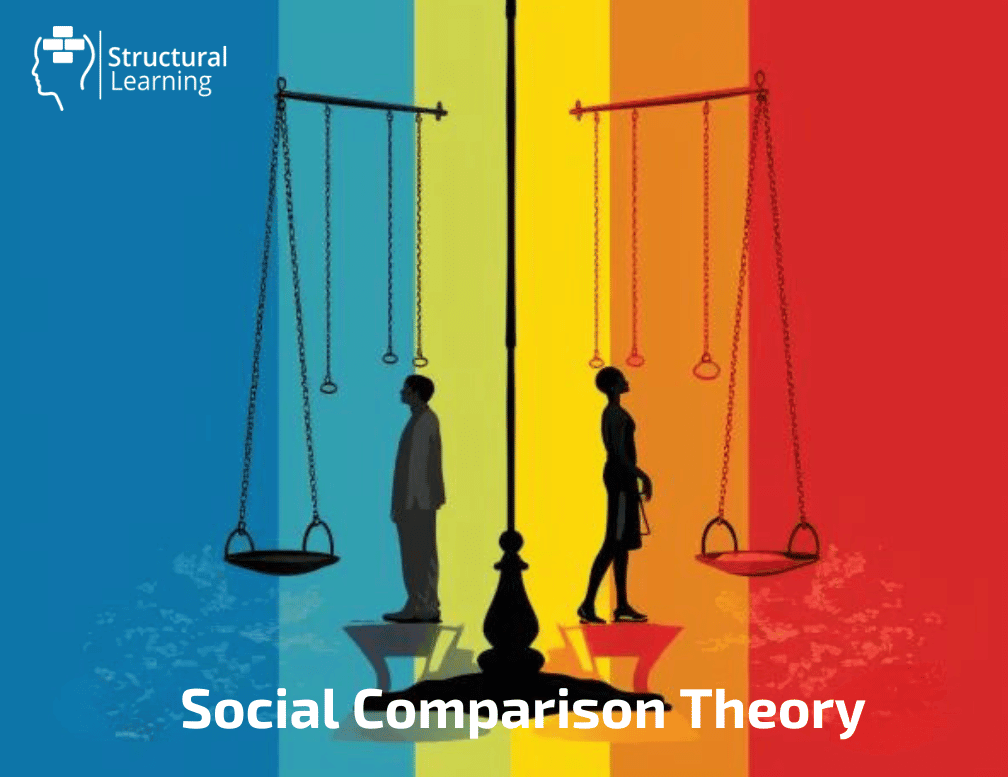
Social media platforms have significantly magnified the impact of social comparison theory, often leading to exacerbated negative comparisons. Platforms like social networking sites are breeding grounds for selective portrayal of life achievements and happiness, which can skew users' perceptions and lead to decreased life satisfaction.
Recognizing this, it's important to adopt strategies to prevent oneself from falling into the trap of negative social comparisons on these platforms. Here are five ways to combat this:
By implementing these strategies, individuals can better navigate the complex dynamics of social media and its influence on social comparison theory, as suggested by research in outlets like Social Psychology Bulletin. This approach not only shields against the negative aspects of social media comparisons but also promotes a healthier, more balanced online experience.
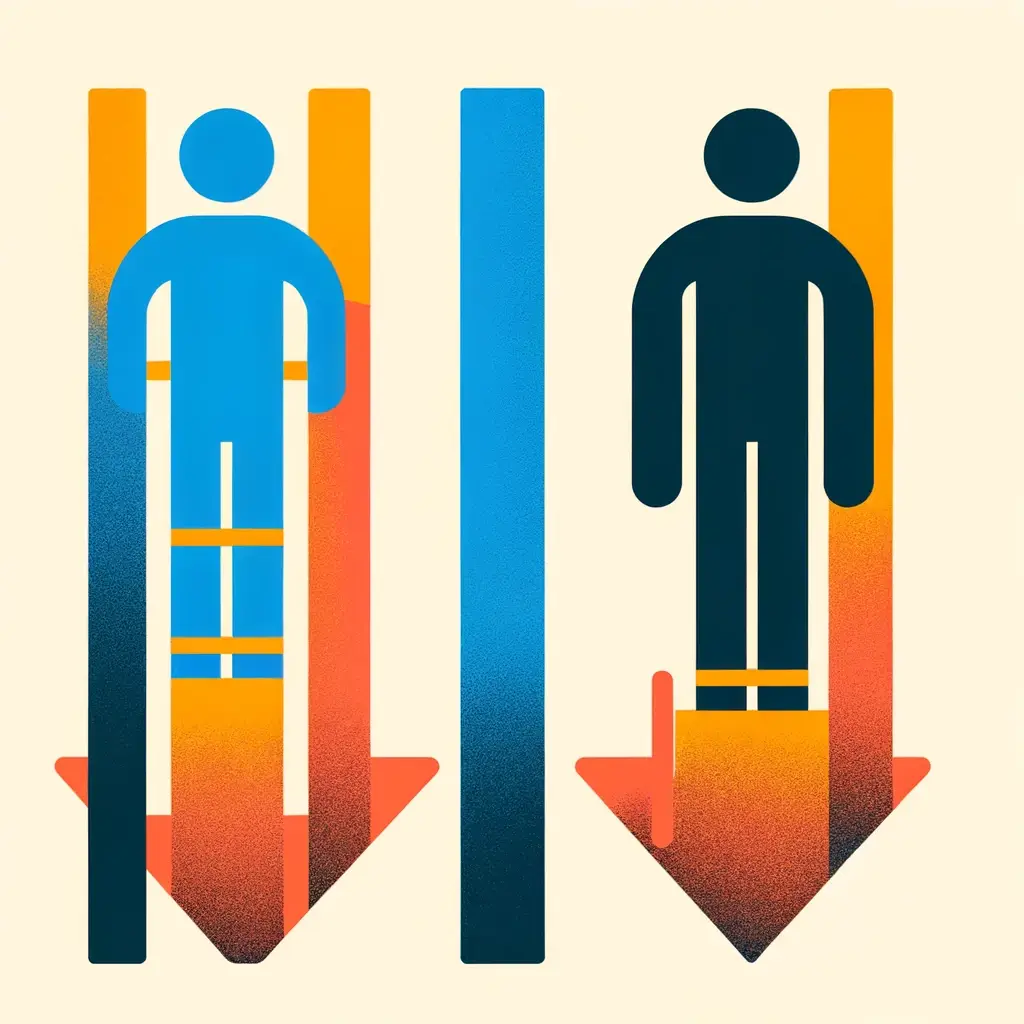
Social Comparison Theory (SCT) has been a subject of various studies, each contributing to our understanding of its efficacy in different contexts. Here are five notable studies:
1. Social Comparison Theory by G. Goethals (1986)
Summary: This study highlights the relevance of SCT across a wide range of social psychological concerns, including attribution, emotions, and affiliation. It emphasizes the theory's vitality and applicability in understanding social behavior. Contribution: This work underlines the broad applicability and enduring relevance of SCT in social psychology.
2. Social comparison: The end of a theory and the emergence of a field by A. Buunk & F. Gibbons (2007)
Summary: This paper traces the evolution of SCT, discussing its development through various phases, including classic, fear-affiliation, downward comparison, and social cognition, and proposes future directions focusing on cognitive, neuroscientific, and evolutionary aspects. Contribution: It marks a significant shift in SCT, moving from a focused theoretical statement to a varied and dynamic research area.
3. Social comparison processes in organizations by J. Greenberg, C. Ashton-James, & N. Ashkanasy (2007)
Summary: This research explores the role of SCT in organizational contexts, influencing various aspects such as organizational justice, performance appraisal, virtual work environments, affective behavior, stress, and leadership. Contribution: It expands SCT's application to organizational behavior, demonstrating its influence in a wide array of organizational phenomena.
4. Distinctness of others, mutability of selves: their impact on self-evaluations by D. Stapel & W. Koomen (2000)
Summary: This study investigates how SCT can lead to assimilation when including comparison information in self-representations and contrast in situations where comparison information is used as a reference for self-judgments. Contribution: It provides insights into the dual nature of social comparisons, revealing how they can lead to different outcomes based on the context of the comparison.
5. What's wrong with cross-cultural comparisons of subjective Likert scales?: The reference-group effect by S. Heine, D. R. Lehman, K. Peng, & J. Greenholtz (2002)
Summary: This paper highlights the challenges in applying SCT in cross-cultural comparisons due to varying reference groups, which can amplify expected cultural differences. Contribution: It adds a critical perspective on the application of SCT in cross-cultural contexts, cautioning against potential biases and misinterpretations.
These studies collectively enhance our understanding of SCT, illustrating its evolution, applications, and implications in various contexts, from personal self-evaluation to organizational and cross-cultural dynamics.
Social comparison theory, a concept rooted in social psychology, is an integral framework for understanding how individuals determine their own social and personal worth based on how they stack up against others. In its essence, the theory posits that people make comparisons to people in their environment, to a "comparison standard," which is often a peer or societal norm.
These comparisons influence not just self-esteem and motivation but also affect mental health and social cognition, as they are part of our social comparison processes, which are pervasive in daily life.
Educators are keenly aware that the classroom is a microcosm of broader social dynamics, and understanding the nuances of these comparison principles can be crucial for fostering a healthy learning environment. For instance, the Self-Evaluation Maintenance Model provides insight into how proximity to successful peers can impact a student's self-evaluation, either through inspiration or discouragement, depending on various factors like relevance and personal relationships.
Key points to understand about this theory include:
As articulated in Current Psychology, "Comparisons are not merely about the better or worse but are a sophisticated dance of context, relevance, and personal significance that intricately shapes our self-perception and development". These principles are not just academic; they have tangible implications for the classroom, where future studies may continue to unveil nuanced understandings of the social comparison process.
Leon Festinger was a pioneering social psychologist known for his groundbreaking contributions to the field. Here's a brief biography and summary of his achievements:
Leon Festinger, a prominent figure in social psychology, is best recognized for his development of Social Comparison Theory and Cognitive Dissonance Theory. His work has profoundly influenced our understanding of human behavior, especially in the context of small group dynamics and individual cognition.
Key Achievements and Contributions
Festinger's theories continue to be pivotal in understanding various aspects of human psychology, from social behavior and group dynamics to cognitive processes and health behavior. His contributions have laid the groundwork for numerous developments in social psychology.

Social comparison is a natural human tendency to assess one's own abilities, opinions, and accomplishments in relation to others. In today's increasingly interconnected society, social comparison has been amplified through platforms such as social media, leading to significant impacts on individuals' self-evaluations.
The constant exposure to carefully curated highlight reels of others' lives and achievements can often create feelings of inadequacy, self-doubt, and low self-esteem. However, social comparison can also serve as a source of motivation and inspiration, fostering self-improvement and personal growth.
Understanding the impact of social comparison on self-evaluation is crucial in navigating these complex effects and developing strategies to maintain a healthy sense of self-worth and positive self-perception.
Downward comparisons refer to the act of comparing oneself to others who are worse off in some way. This can be a strategy used to protect or boost one's self-esteem. When individuals engage in downward comparisons, they evaluate themselves in relation to others who are less successful, less accomplished, or facing more difficulties.
By comparing themselves to those who are worse off, individuals can feel better about themselves and their situation.
Engaging in downward social comparisons allows individuals to focus on their strengths and achievements, as they compare themselves to others who are not as fortunate or successful. For example, a person who is feeling insecure about their appearance may compare themselves to someone who they perceive as less attractive, which helps them feel more attractive by comparison.
Similarly, individuals may compare their own financial struggles to those who are facing greater financial difficulties to feel a sense of stability and resourcefulness.

Several factors contribute to the effectiveness of downward comparisons in boosting self-esteem. Firstly, the perceived similarity is important as comparisons are more effective when individuals perceive themselves as similar to the target of comparison.
Secondly, the relevance of the domain being compared matters; the comparison needs to be relevant to the individual's self-concept and the areas in which they are seeking validation. Finally, the extent to which individuals can distance themselves from the negative aspects of the target of comparison can also impact the effectiveness of downward comparisons.
Downward comparisons can have a positive impact on self-esteem by allowing individuals to focus on their strengths and accomplishments. Through comparing themselves to others who are worse off, individuals can enhance their self-perception and feel better about themselves and their situation.

Upward comparisons refer to the act of individuals comparing themselves to those they perceive as being "better" in certain aspects. Through these comparisons, individuals evaluate themselves based on the success, abilities, or attributes of others. This process can significantly impact an individual's self-esteem and motivation.
When people compare themselves to those they consider as more accomplished or superior, it often leads to negative effects on their self-esteem. They may feel inadequate, flawed, or inferior in comparison. This negative self-evaluation can lower their overall self-worth and confidence, causing feelings of dissatisfaction and unhappiness.
Moreover, upward comparisons can also have a profound impact on an individual's motivation. When individuals consistently compare themselves to those they perceive as superior, it can create a sense of unattainable goals or unrealistic standards. This comparison can reduce their motivation levels as they feel discouraged or overwhelmed by the perceived gap between themselves and the ideal.
However, it is important to note that not all upward comparisons are detrimental. Under certain circumstances, upward comparisons can serve as sources of inspiration and motivation. By observing the achievements and qualities of others, individuals can set higher aspirations for themselves and strive for self-improvement.
In conclusion, upward comparisons can have both positive and negative impacts on an individual's self-esteem and motivation. While they can potentially lower self-esteem and demotivate individuals, they can also serve as inspiration for personal growth and achievement. It is essential for individuals to maintain a healthy balance in their comparisons and focus on their own progress rather than solely on others' accomplishments.

In adolescence, a pivotal developmental stage, social comparison theory takes on a profound significance, particularly due to the emerging individual differences in social comparison orientation. Adolescents, in their quest for identity formation and self-understanding, often engage in various types of comparisons, seeking benchmarks against which to measure their own abilities and achievements. This period is marked by heightened sensitivity to peer perceptions and a strong inclination towards assessing oneself in relation to others.
One critical aspect of these developmental comparisons is their impact on subjective well-being. Adolescents who frequently compare themselves to others might experience fluctuations in life satisfaction, contingent on the nature of these comparisons. For instance, upward comparisons, or comparing oneself to someone perceived as better off, can lead to feelings of inferiority and decreased self-esteem.
Conversely, downward comparisons, while potentially boosting short-term self-esteem, may not contribute positively to long-term self-concept and life satisfaction. This dynamic is crucial in the context of comparison in adjustment, where adolescents navigate the complex social hierarchies of their environments.
Moreover, the Dunning-Kruger Effect can play a role in adolescent social comparison, where individuals with lower ability at a task overestimate their ability, and those with higher ability underestimate it. This cognitive bias can lead to skewed self-assessments among adolescents, further complicating their social comparison processes.
Gender differences also emerge in how adolescents engage in social comparisons, with varying implications for their mental health. Research indicates that girls might be more prone to social comparisons related to physical appearance and academic achievement, potentially impacting their self-esteem and body image. Boys, on the other hand, may engage more in comparisons related to athletic abilities or social dominance.
In summary, the developmental aspects of social comparison theory in adolescence are complex and multifaceted, deeply intertwined with individual differences and the social comparison orientation. These comparisons, while a natural part of adolescent development, can significantly influence an individual's subjective well-being, life satisfaction, and overall mental health, necessitating a nuanced understanding of their implications.

It's crucial to recognize that while comparing ourselves to others is a natural human tendency, it can sometimes lead to negative emotions and affect our mental well-being. To mitigate these adverse effects, both adolescents and adults can benefit from specific coping strategies.
These strategies are designed to help individuals navigate the complex landscape of social comparisons, fostering a healthier self-perception and promoting overall well-being. In the following list, we outline ten practical and effective approaches that can be employed to counteract the negative impacts of social comparisons.
These strategies range from enhancing accurate self-evaluation to regulating social media use, all aimed at improving mental health and subjective well-being.
By implementing these strategies, individuals can better navigate the challenges of social comparisons, enhancing their mental well-being and resilience against the potentially harmful effects of mental comparisons.

In the workplace, social comparison theory often manifests in various forms, influencing employee behavior, morale, and productivity. To exemplify what this looks like in practice and how to spot the signs, we present five hypothetical scenarios. These examples paint a vivid picture of social comparison theory in action, demonstrating both its subtle and overt impacts in a professional setting.
These scenarios illustrate the multifaceted nature of social comparison in the workplace. By recognizing these dynamics, managers and employees can better understand the implications of comparisons and work towards fostering a more supportive and productive work environment.

Social media platforms have significantly magnified the impact of social comparison theory, often leading to exacerbated negative comparisons. Platforms like social networking sites are breeding grounds for selective portrayal of life achievements and happiness, which can skew users' perceptions and lead to decreased life satisfaction.
Recognizing this, it's important to adopt strategies to prevent oneself from falling into the trap of negative social comparisons on these platforms. Here are five ways to combat this:
By implementing these strategies, individuals can better navigate the complex dynamics of social media and its influence on social comparison theory, as suggested by research in outlets like Social Psychology Bulletin. This approach not only shields against the negative aspects of social media comparisons but also promotes a healthier, more balanced online experience.

Social Comparison Theory (SCT) has been a subject of various studies, each contributing to our understanding of its efficacy in different contexts. Here are five notable studies:
1. Social Comparison Theory by G. Goethals (1986)
Summary: This study highlights the relevance of SCT across a wide range of social psychological concerns, including attribution, emotions, and affiliation. It emphasizes the theory's vitality and applicability in understanding social behavior. Contribution: This work underlines the broad applicability and enduring relevance of SCT in social psychology.
2. Social comparison: The end of a theory and the emergence of a field by A. Buunk & F. Gibbons (2007)
Summary: This paper traces the evolution of SCT, discussing its development through various phases, including classic, fear-affiliation, downward comparison, and social cognition, and proposes future directions focusing on cognitive, neuroscientific, and evolutionary aspects. Contribution: It marks a significant shift in SCT, moving from a focused theoretical statement to a varied and dynamic research area.
3. Social comparison processes in organizations by J. Greenberg, C. Ashton-James, & N. Ashkanasy (2007)
Summary: This research explores the role of SCT in organizational contexts, influencing various aspects such as organizational justice, performance appraisal, virtual work environments, affective behavior, stress, and leadership. Contribution: It expands SCT's application to organizational behavior, demonstrating its influence in a wide array of organizational phenomena.
4. Distinctness of others, mutability of selves: their impact on self-evaluations by D. Stapel & W. Koomen (2000)
Summary: This study investigates how SCT can lead to assimilation when including comparison information in self-representations and contrast in situations where comparison information is used as a reference for self-judgments. Contribution: It provides insights into the dual nature of social comparisons, revealing how they can lead to different outcomes based on the context of the comparison.
5. What's wrong with cross-cultural comparisons of subjective Likert scales?: The reference-group effect by S. Heine, D. R. Lehman, K. Peng, & J. Greenholtz (2002)
Summary: This paper highlights the challenges in applying SCT in cross-cultural comparisons due to varying reference groups, which can amplify expected cultural differences. Contribution: It adds a critical perspective on the application of SCT in cross-cultural contexts, cautioning against potential biases and misinterpretations.
These studies collectively enhance our understanding of SCT, illustrating its evolution, applications, and implications in various contexts, from personal self-evaluation to organizational and cross-cultural dynamics.